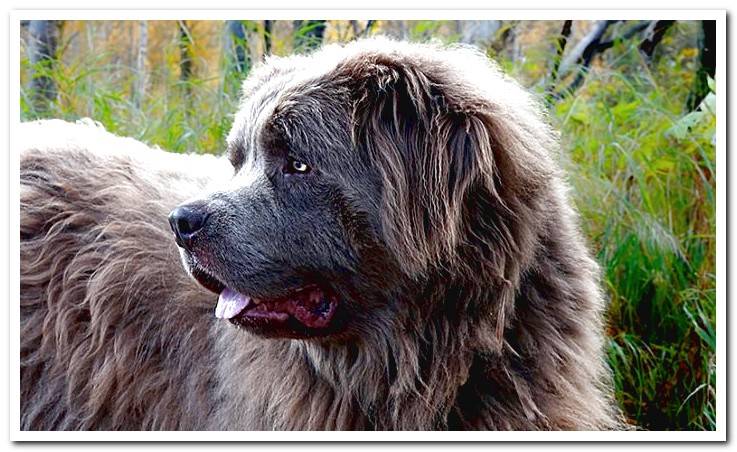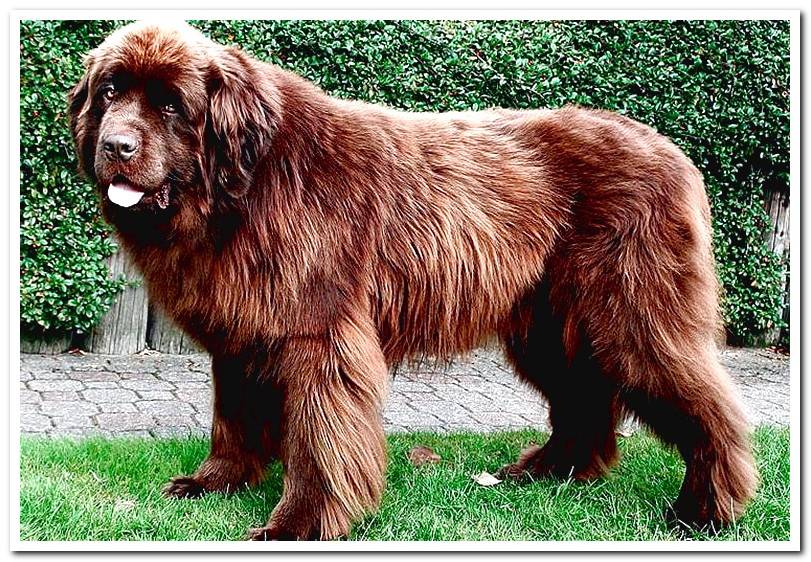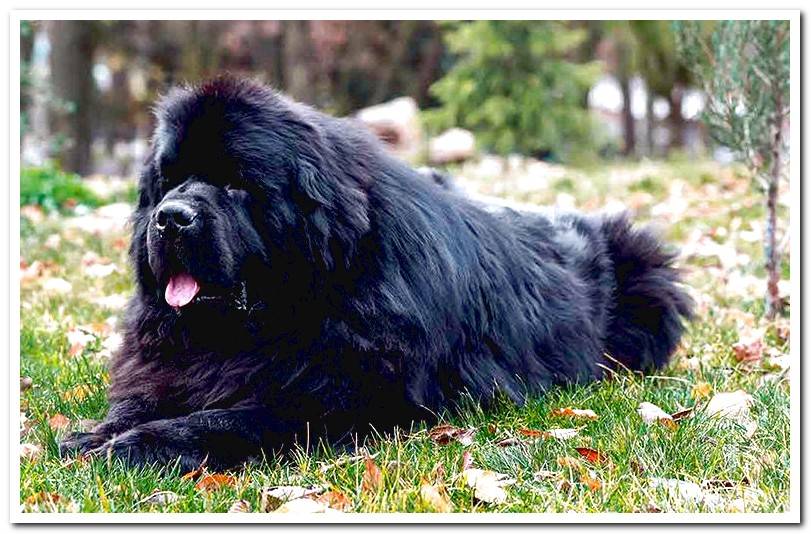
If you are looking for a large breed dog, furry and with a tender gaze, the Newfoundland, also called Newfoundland, may be ideal for you. It is an incredible dog with a sweet personality and devoted to its masters.
In addition, this breed has been used as a marine rescuer, thanks to its great ability to swim. Do you want to adopt a Newfoundland? Know all the information that Dogsis shows you about its characteristics and care. Let’s go there!
Index of contents
- 1 Origin of the Newfoundland breed
- 2 How is a Newfoundland dog?
- 3 What is the character of a Newfoundland?
- 4 Basic care of Newfoundland
- 5 Common Newfoundland Diseases
Origin of the Newfoundland breed
Like the Labrador Retriever, Newfoundland is native to Newfoundland, Canada. It is very possible that it descends from dogs introduced into the area by the Viking tribes, around the year 1100.
After the discovery of America and the arrival of Europeans on the continent, the ancestors of Newfoundland crossed paths with new dogs. At that time, the breed had already developed its resistance to the cold climate and icy waters of the region, as it was used as a fishing and rescue dog.
This rescue capacity has earned the race several anecdotes as lifeguards after shipwrecks. One of them occurred in 1919, when a Newfoundland dog received a gold medal for saving 20 people from drowning.
How is a Newfoundland dog?
You are facing a large dog with abundant fur. According to International Cynological Federation (FCI) standard the head should be big and solid, while the body is strong and muscular.
The Newfoundland truffle is wide and dark, the color corresponds to the shade of the coat. The eyes are small and sunken, they have a characteristic tender look. As for the color of the iris, it can be black, brown or light brown.
The muzzle is square and short, the jaw has a scissor bite. The ears are small and triangular, although with rounded edges. The tail, meanwhile, is wide and past, the Newfoundland uses it as a rudder when swimming.
The coat is one of the biggest attractions of the breed. The cloak is double and resists water, makes it look like a big bear. The outer layer is long and smooth, while the inner layer is dense. Muzzle and head have short hair, while it lengthens on the legs and tail. As for color, the Newfoundland can be black, chestnut or white with black.
|
|
Approximate height of 71 cm in males and 66 cm in females |
|
|
Weight of 68 kg in males and 54 kg in females |
|
|
Short, dense, black, brown or bicolor hair |
|
|
Patient and friendly character |
|
|
Strong health although with some possible genetic inheritances |
|
|
Estimated life expectancy between 9 and 10 years |

What is the character of a Newfoundland?
The Newfoundland it’s sweet and serene, even a little stately. Thanks to his past as a working dog, he is very helpful and resistant, he loves physical activity and games.
With the family he is devoted, faithful and calm. In addition, it is a good watchdog, although it is recommended for people who live in houses and not in apartments, due to its size and energy.
This breed gets along well with children and other pets. He loves outdoor activities, especially water sports, so living in a house with a pool or visiting lakes and beaches are the ideal for him.
Although he is a great swimmer, watch when he enters the water and avoid making sudden movements, because he could believe that you are drowning and try to get you out. It is a smart and sweet dog. With a good education, you will never be aggressive or shy.
Basic care of Newfoundland
This breed is not highly recommended for hot areas, as it suffers heat stroke easily. For this reason, you shouldn’t force him to exercise either.
In cool climates, it requires moderate exercise, at least half an hour daily. Walks, accompanying you to the bicycle or aquatic activities are ideal for him. Pursuing the ball, practicing Agility, and playing with children are other ways to entertain him.
Even if you need space to develop and be happy It is a family dog, so it needs to be part of the dynamics of the home every day.
Training and socialization are recommended from a young age. Even puppies show a sociable personality, so it is not difficult to train them. It is necessary to teach him to swim from four months, you can attend dog training classes to do it safely.
The Newfoundland shows a better response to warm training, so avoid reprimanding it and instead use positive reinforcement. His friendly and calm personality contribute to the process.

Common Newfoundland Diseases
This breed has a short life expectancy, 10 years in most dogs. In addition, he has a genetic disposition to suffer the following ailments:
- Elbow dysplasia
- Heart diseases
- Hip dysplasia
